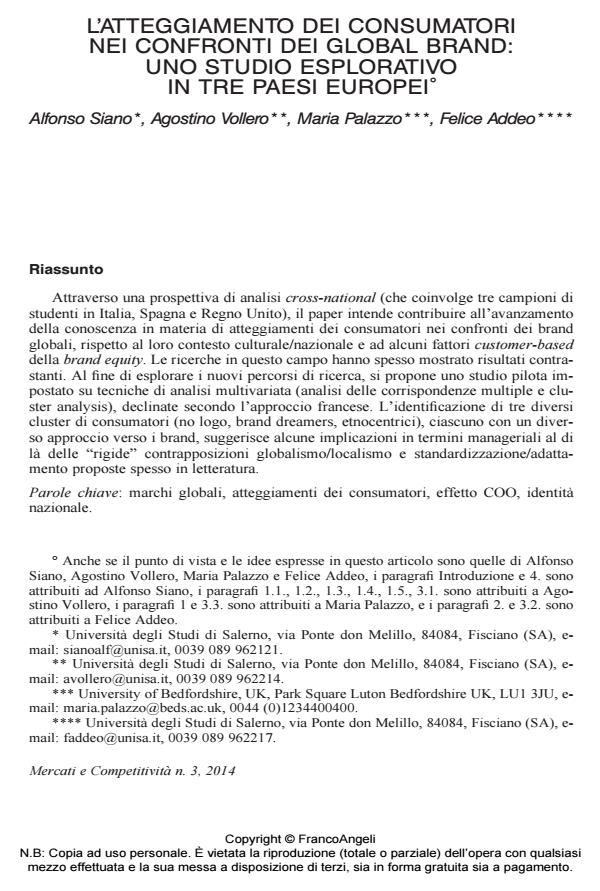Consumer attitudes towards global brands: an explorative study in three european Countries
Journal title MERCATI E COMPETITIVITÀ
Author/s Alfonso Siano, Agostino Vollero, Maria Palazzo, Felice Addeo
Publishing Year 2014 Issue 2014/3
Language Italian Pages 26 P. 87-112 File size 139 KB
DOI 10.3280/MC2014-003006
DOI is like a bar code for intellectual property: to have more infomation
click here
Below, you can see the article first page
If you want to buy this article in PDF format, you can do it, following the instructions to buy download credits

FrancoAngeli is member of Publishers International Linking Association, Inc (PILA), a not-for-profit association which run the CrossRef service enabling links to and from online scholarly content.
Thanks to a cross-national analysis (involving three samples of students in Italy, Spain and UK), the paper aims to contribute to the knowledge about aspects related to consumer attitudes towards global brands due to their cultural and national context as well as some customer-based brand-equity factors. Actually, different studies about those topics have often presented conflicting results. In order to reach the research objectives of our pilot study, the use of a sequence of Multiple Correspondence Analysis and cluster analysis, declined according to the French approach, has been suggested. The identification of three different clusters of consumers (no logo, brand dreamers, ethnocentric), each with a different approach towards brands, allows us to offer to company’s decision-makers some managerial indications, that are not linked to “rigid” contrasts globalism/localism and standardization/adaptation often available in theory.
Keywords: Global brands, consumer attitudes, COO effect, national identity
Alfonso Siano, Agostino Vollero, Maria Palazzo, Felice Addeo, L’atteggiamento dei consumatori nei confronti dei global brand: uno studio esplorativo in tre paesi europei in "MERCATI E COMPETITIVITÀ" 3/2014, pp 87-112, DOI: 10.3280/MC2014-003006